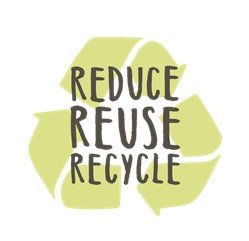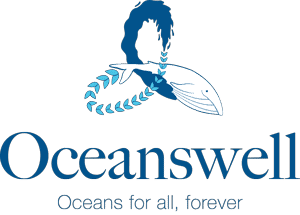By Vinuri Silva
My journey with microplastics began back in 2019 when I investigated microplastic ingestion by common anchovies and sardines in Sri Lanka and Australia. In Sinhalese, these species are referred to as Haalmassa (Stolephorus commersonnii), Saalaya (Sardinella gibbosa), and Hurulla (Ablygaster sirm), and all of these are popular seafood choices of Sri Lankans. Unfortunately, through my research, I found that there were microplastics in over 90% of the fish I collected from Sri Lanka compared to the same species in Australia (of which only 40-55% of the fish had microplastics). This initial foray into microplastics made me realise I wanted to learn more. Today, I am a PhD candidate at the University of Adelaide, where my research focuses on marine plastic pollution. Here, I investigate the bacteria that reside on plastic, which may play a role in their degradation.
A career in researching marine plastic pollution is somewhat unconventional, and what got me invested in this path is that I am Sri Lankan. A few years ago, during my undergraduate degree where I was studying a Bachelor of Science in Marine Biology, I attended a seminar in Adelaide, Australia, where they displayed a graph titled “The countries polluting the oceans the most”. I was shocked to see Sri Lanka, ranked as #5 in the world. Even though these statistics regarding Sri Lanka were challenged in 2020, this was a “eureka” moment for me where I realised I wanted to dive into researching the topic of plastic pollution to help answer unanswered questions.
Plastic was invented only 114 years ago, and it has increasingly become one of the most indispensable man-made creations in use. Why? Because it is an extremely versatile and durable material that is composed of various elements (such as carbon, hydrogen, and oxygen) and additives, allowing it to be moulded into various shapes that cater to a range of applications. These qualities, paired with its inexpensiveness, lead to plastic being used for short periods, before being discarded. Geyer et al. (2017) estimated that 8300 million metric tons of virgin plastics have been manufactured by 2017! Of this, approximately 8 million metric tonnes of plastic is discarded into the oceans annually (based on global estimates by Jambeck et al. (2015)).

Plastics are known to absorb chemical pollutants that include polycyclic aromatic hydrocarbons (PAH), polychlorinated biphenyl (PCBs), and organophosphorus pesticides (reviewed by O’Connor et al. 2016) which is dangerous for marine organisms that might accidentally ingest them. Ryan (2016) found a Loggerhead turtle hatchling that had ingested multiple pieces of macroplastic fragments that blocked the cloaca and forced some plastics into the animals bladder (Ryan, 2016). Ingesting macroplastic can also lead to starvation (plastics ‘fill’ up an organism’s stomach but provide no nutritional value (McCauley, et al. 2001)) and suffocation (Andrades et al. 2021). Some wildlife including turtles, fish, whales, and seabirds get entangled in plastic floating in the water, such as discarded fishing nets (Pierce et al. 2004, O¨zdilek et al. 2006).
My current area of research focuses on the inhabitants of marine plastic. They are invisible to the naked eye and are microbial organisms.
Once a piece of plastic has entered the ocean, the rate of degradation (how fast it can break down) decreases. Marine environments have lower temperatures than land (Gregory & Andrady 2005), which affects the time it takes for plastics to decompose. It is estimated that a plastic water bottle could take about 450 years to fully decompose in the ocean (discussed in Chamas et al. 2020; WWF, 2018). When plastics have broken down into pieces less than 5mm, they are called “microplastics”. Plastics that are larger than 5mm are referred to as “macroplastics”.
Marine microbes that colonise plastic are unique and form small communities on the surface of the plastic giving it the name the Plastisphere. The plastisphere microbes help facilitate the breakdown of plastics. My research tries to identify which bacteria are a part of the plastisphere. This will help me recognise any plastisphere bacteria that are capable of producing enzymes that can break down plastic. However, not all plastisphere microbes are known to be “good”. Some are considered to be pathogenic, which means that they are capable of causing diseases in marine environments and organisms. An example of a pathogenic plastisphere species is a bacteria that belongs to the genus Vibrio. These bacteria are capable of causing vibriosis (an intestinal disease) in seafood and were found travelling on pieces of plastic in the Northern Atlantic (Amaral-Zettler et al., 2015). Whether such pathogens “hitchhike” rides and transport on marine plastic will also be explored through my research.
I have discovered marine plastic pollution research is a diverse area with many possible paths. It is a topic that requires intersecting knowledge from people of various disciplines including marine biologists, molecular and microbiologists, biochemists, oceanographers, and bioinformaticians. Additionally, raising awareness, communicating research findings to the public, stakeholder engagement (such as from the media, educational institutions, government, private and non-profit organisations) is also required to successfully address plastic pollution if we want lasting outcomes. I have been fortunate to be affiliated with eXXpedition- an all-female sailing voyage consisting of a multidisciplinary crew, sailing across the world, researching marine plastic pollution, and raising awareness on the issue. Even though the COVID-19 pandemic interrupted the voyage, the connections and guidance I gained helped me focus on my strengths in science to communicate plastic pollution to a wider audience.
As a member of the public and an ocean lover, I understand that all the research findings, statistics, and facts related to plastic pollution may be overwhelmingly daunting. However, I urge you to consider how you can contribute to the issue beyond refusing, reducing, reusing, and recycling. It can be by encouraging sustainable practices amongst your friends and family or by sharing knowledge that will help inspire others to follow better plastic practices such as recycling. As a researcher, my contributions are in trying to understand the extent of the problem, in order to address it. I’m hopeful that one day, when everyone joins together and plays their part, we will be able to tackle oceanic plastic pollution together.

References
Amral-Zettler, L.A., Zettler, E.R., Slikas, B., Boyd, G.D., Melvin, D.W., Morrall, C.R., Proskurowski, G. & Mincer, T.J. (2015). The biogeography of the Plastisphere: implications for policy. Frontiers in Ecology and the Environment, 13, 541-546.
Andrades, R., Trindade, P.A.A. & Giarrizzo, T. (2021). A novel facet of the impact of plastic pollution on fish: Silver croaker (Plagioscion squamosissimus) suffocated by a plastic bag in the Amazon estuary, Brazil. Marine Pollution Bulletin, vol. 166, 112197.
Chamas, A., Moon, H., Zheng, J., Qiu, Y., Tabassum, T., Jang, J.H., Abu-Omar, M., Scott, S.L., & Suh, S. (2020). Degradation Rates of Plastics in the Environment. ACS Sustainable Chemistry & Engineering 2020 8 (9), 3494-3511.
Geyer, R., Jambeck, J.R., & Law, K.L. (2017). Production, use, and fate of all plastics ever made. Science Advances, 3, e1700782.
Gregory, M.R. & Andrady, A.L. (2005). Plastics in the marine environment. Plastics and the environment, 379-402.
Jambeck, J. R., Geyer, R. W., Siegler, T. R., Perryman, M., Andrart, A., Narayan, R. & Law, K. R. (2015). Plastic waste inputs from land into the ocean. Science, 347, 768-771.
Keswani, A., Oliver, D. M., Gutirrez, T. & Quilliam, R. S. (2016). Microbial hitchhikers on marine plastic debris: Human exposure risks at bathing waters and beach environments. Marine Environmental Research, 118, 10-9.
McCauley, S.J., Bjorndal, K.A. (2001). Conservation Implications of Dietary Dilution from Debris Ingestion: Sublethal Effects in Post-Hatchling Loggerhead Sea Turtles. Conservation Biology. 13, 4, 925-929.
O’Connor, I.A., Golsteijn, L. & Hendriks, A.J. (2016). Review of the partitioning of chemicals into different plastics: Consequences for the risk assessment of marine plastic debris. Marine Pollution Bulletin, 113, 17-24.
Özdilek, H. G., Yalçin-Özdilek, S., Ozaner, F. S., & Sönmez, B. (2006). Impact of accumulated beach litter on Chelonia mydas L. 1758(Green turtle) Hatchlings of the Samandag Coast, Hatay, Turkey. Fresenius Environmental Bulletin, 15(2), 95-103.
Pierce, K.E., Harris, R.J., Larned, L.S., Pokras, M.A. (2004). Obstruction and starvation associated with plastic ingestion in a Northern Gannet Morus bassanus and a Greater Shearwater Puffinus gravis. Mar. Ornithol. 32, 187–89.
Ryan P.G. (2016). Ingestion of Plastics by Marine Organisms. In: Takada H., Karapanagioti H. (eds) Hazardous Chemicals Associated with Plastics in the Marine Environment. The Handbook of Environmental Chemistry, vol 78. Springer, Cham.
Worm, B., Lotze, H. K., Jubinville, I., Wilcox, C. & Jambeck, J. R. (2017). Plastic as a persistent marine pollutant. Annual Review of Environment and Resources, 42, 1-26.
WWF, 2018. The lifecycle of plastics, accessed on 23.05.2021.




